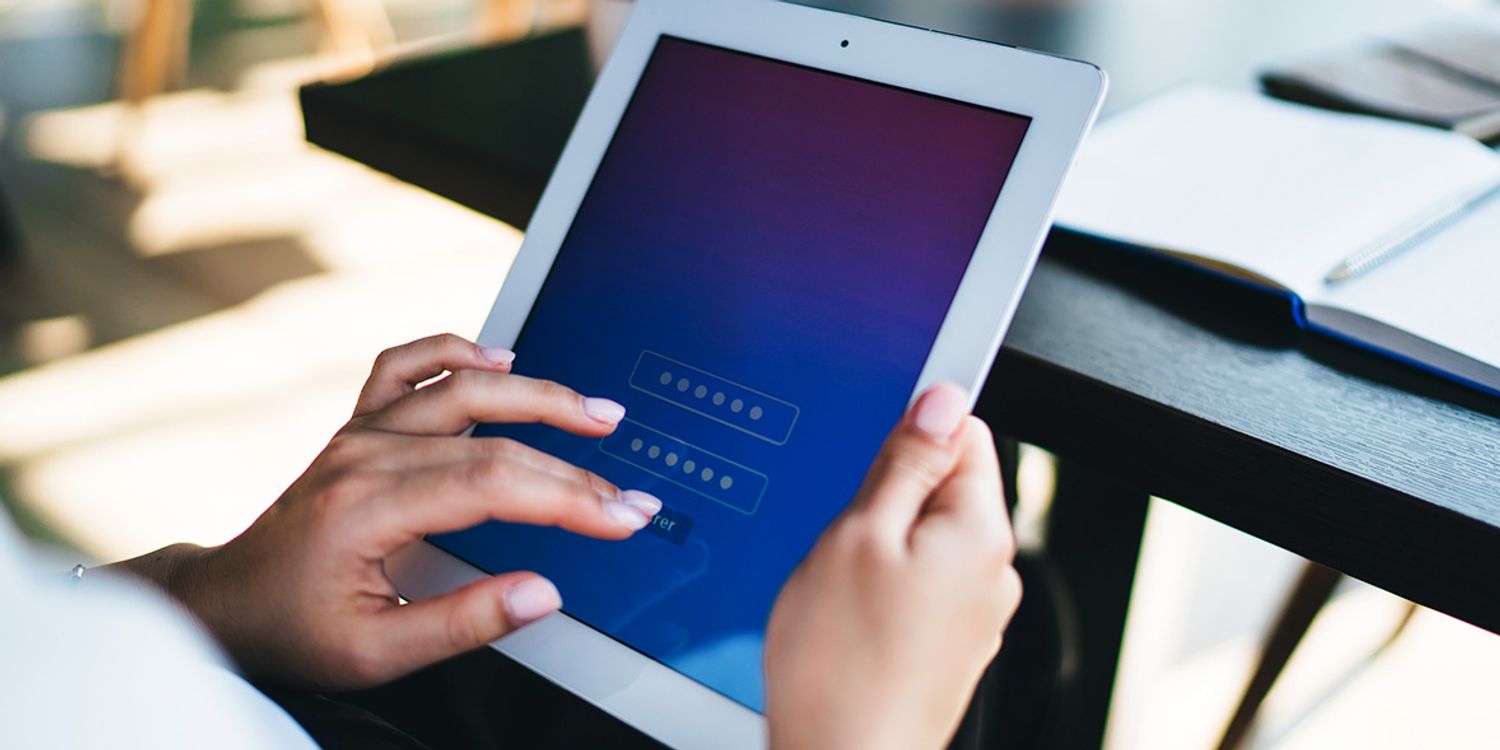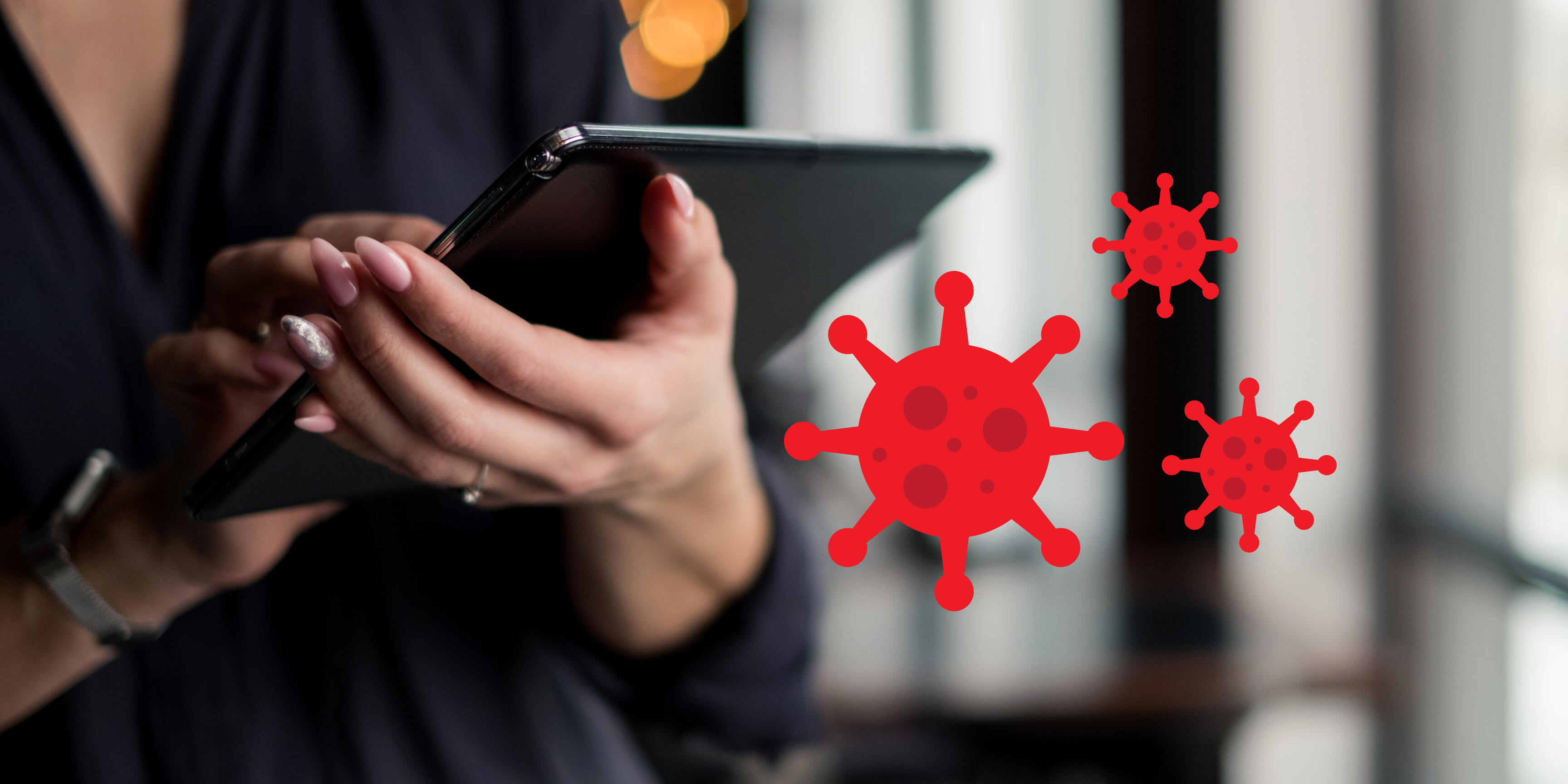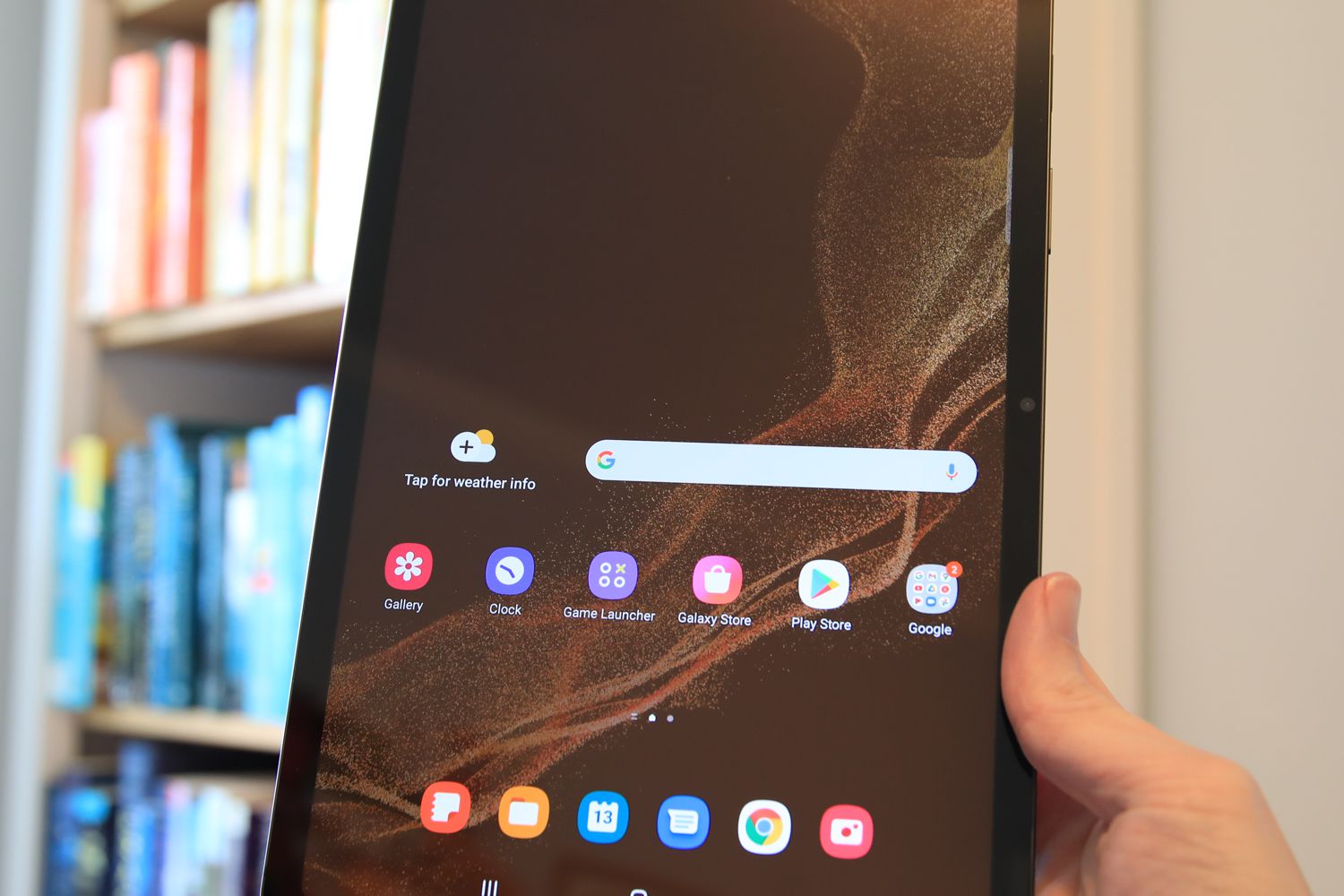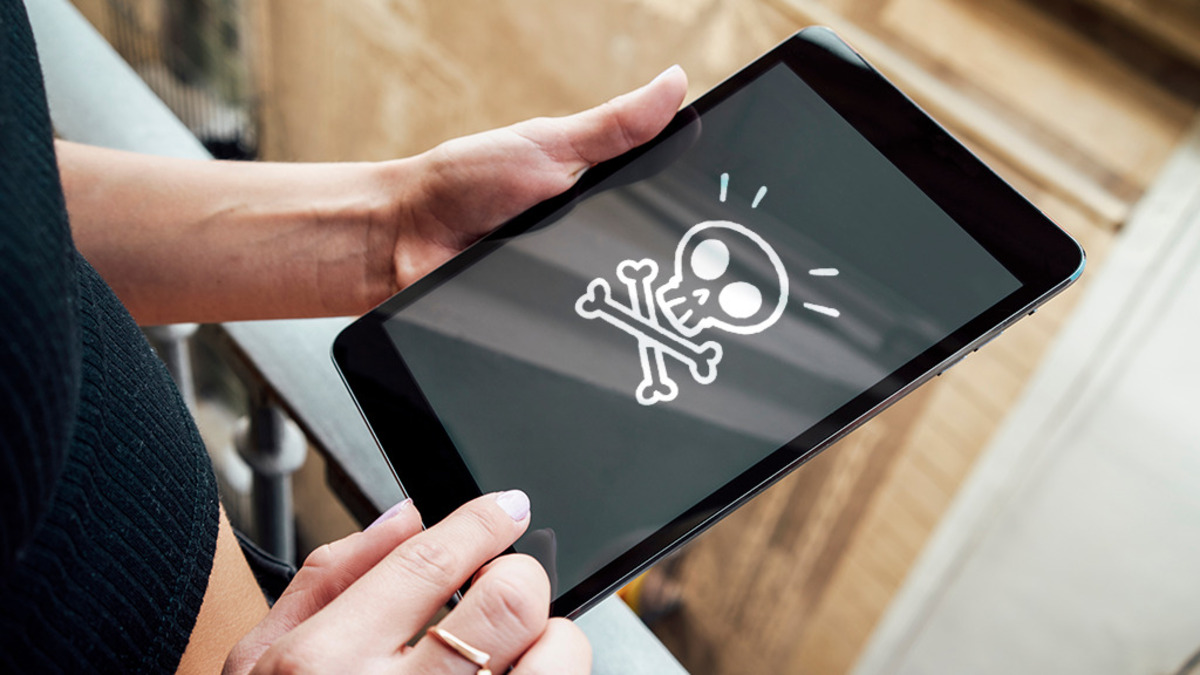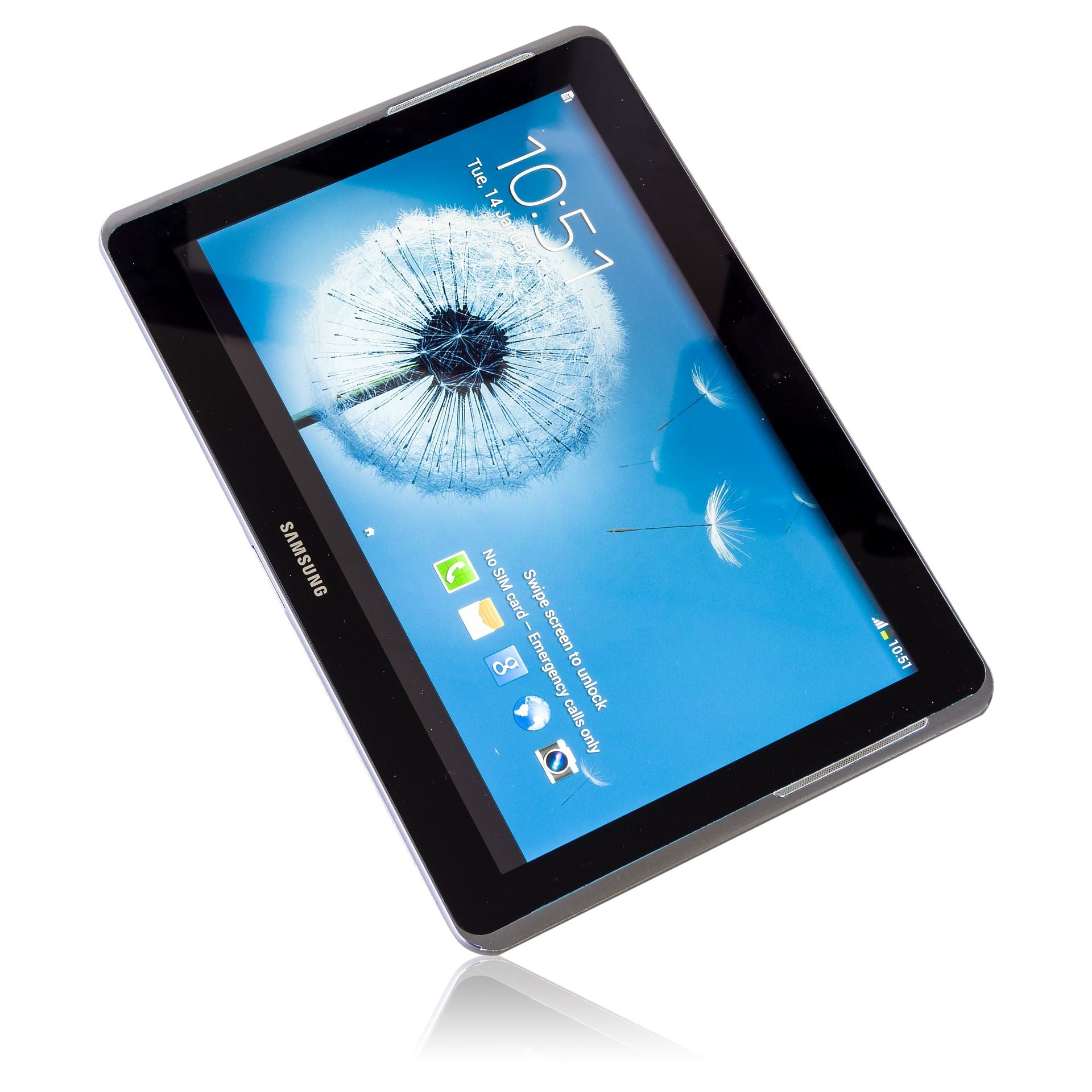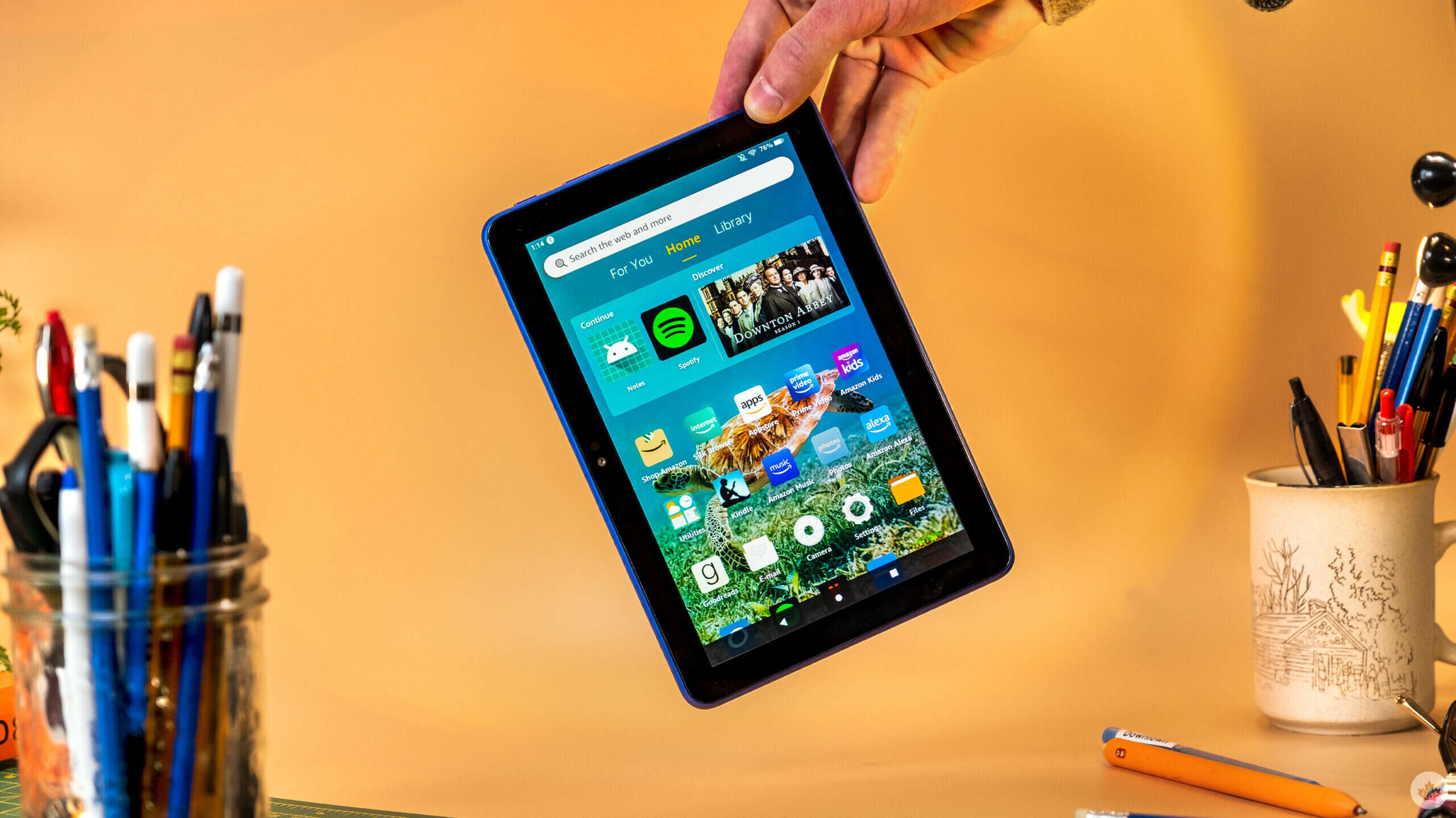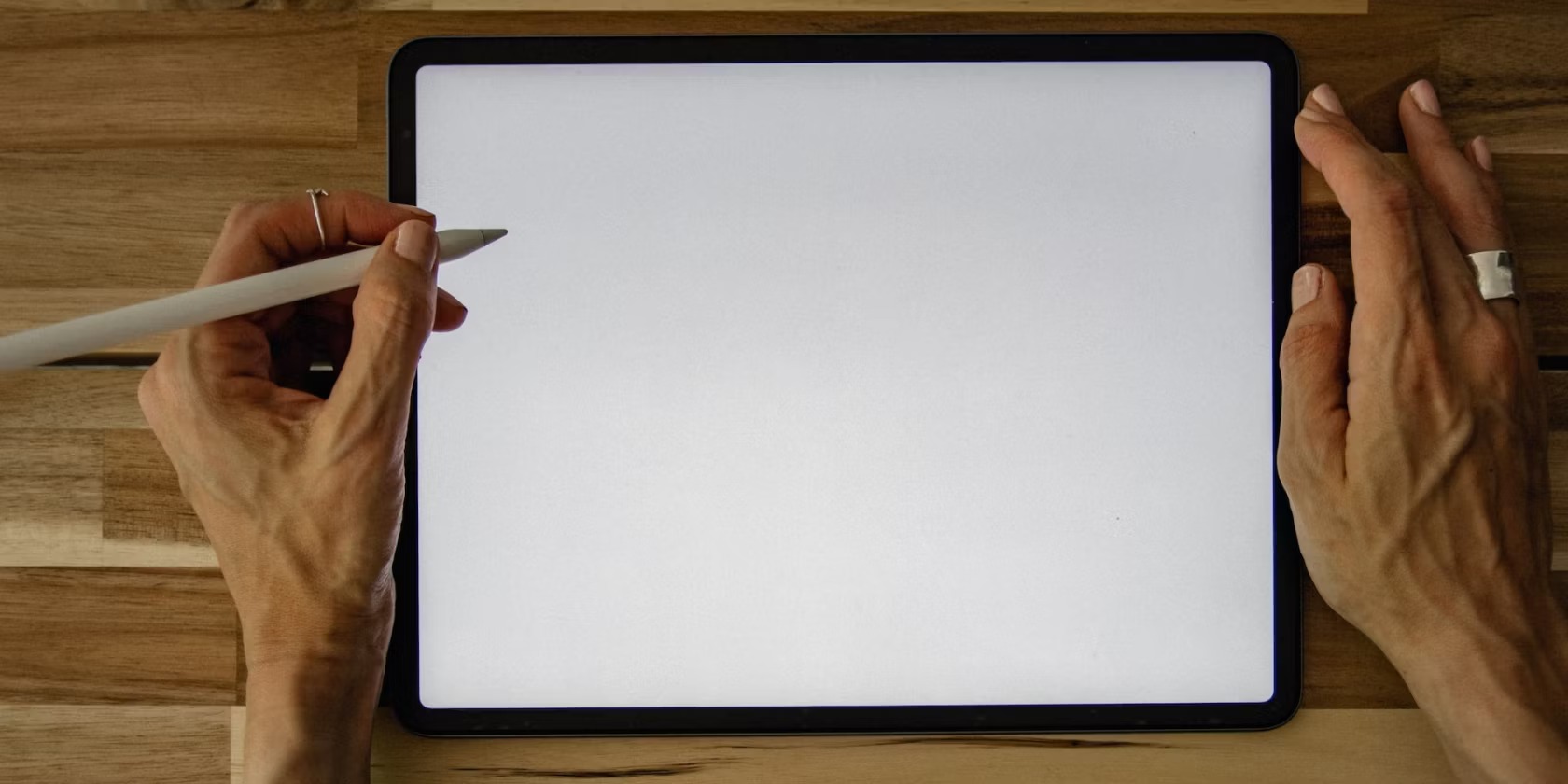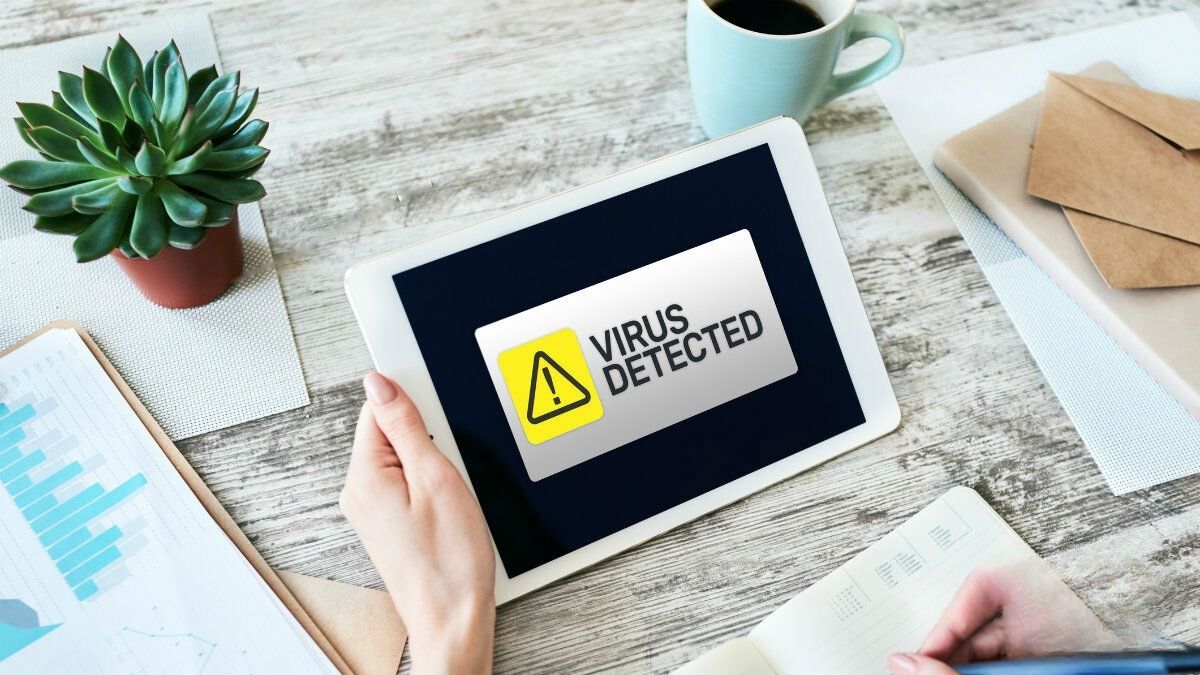Introduction
Welcome to the world of tablets, where we can stay connected, productive, and entertained with just a flick of our fingers. Tablets have become an essential part of our daily lives, serving as portable computers that offer convenience and flexibility. However, just like any other digital device, tablets are not immune to threats, particularly from viruses and malware.
Viruses can infiltrate your tablet through malicious downloads, infected websites, or even unsuspecting email attachments. Once a virus infects your tablet, it can compromise your personal data, slow down your device’s performance, or even render it completely unusable.
Fortunately, there are steps you can take to protect your tablet from viruses and keep your personal information secure. In this article, we will explore various methods to safeguard your tablet from potential threats. By implementing these measures, you can enjoy a worry-free tablet experience, knowing that your device and data are protected.
It’s important to note that while these measures are effective in reducing the risk of virus infections, they are not foolproof. It is always recommended to stay vigilant and keep up with the latest security practices in order to stay one step ahead of cyber threats.
Install Antivirus Software
One of the most important steps to protect your tablet from viruses is to install reliable antivirus software. Antivirus software is designed to detect and eliminate viruses, malware, and other malicious threats that may harm your device.
When choosing antivirus software, opt for a reputable and well-established brand that offers regular updates and a wide range of features. Look for software that provides real-time scanning, automatic updates, and a robust firewall to ensure comprehensive protection against known and emerging threats.
Once you have selected the antivirus software of your choice, download and install it on your tablet. Follow the instructions provided by the software vendor to complete the installation process.
After installation, perform a full system scan to identify any existing viruses or malware on your tablet. The antivirus software will quarantine or remove any malicious files it finds. Regularly schedule scans to proactively detect and eliminate potential threats on an ongoing basis.
Remember to keep your antivirus software up to date. New viruses and malware are constantly being developed, so it’s crucial to regularly update your software to ensure you are protected against the latest threats. Enable automatic updates whenever possible to ensure your antivirus software remains current.
While antivirus software offers a strong defense against viruses, it’s important to note that it may not catch all threats. Therefore, it’s essential to follow the other security practices outlined in this article to minimize the risk of virus infections.
Keep Your Operating System and Apps Updated
Regularly updating your tablet’s operating system (OS) and apps is a crucial step in protecting it from viruses. OS updates often include security patches and bug fixes that address vulnerabilities and weaknesses that can be exploited by hackers and malware.
Make sure to enable automatic updates for your tablet’s operating system. This ensures that you receive the latest security enhancements as soon as they are available. If automatic updates are not available, regularly check for updates manually and install them promptly.
In addition to updating your OS, it’s equally important to keep your apps up to date. Developers release app updates to fix bugs and security vulnerabilities. By keeping your apps updated, you ensure that you have the latest security measures in place.
Configure your tablet to automatically update apps whenever updates are available. Alternatively, you can manually check for updates in your app store or marketplace and install them as soon as they become available.
Ignoring OS and app updates increases the risk of potential security breaches. Hackers often exploit outdated software to gain unauthorized access to devices and install malicious programs.
By promptly installing OS and app updates, you close security loopholes and protect your tablet from viruses and other malware. This proactive approach not only enhances the security of your tablet but also ensures optimal performance and compatibility with the latest features and technologies.
Be Cautious with Downloads
Downloading apps, files, and other content is a common activity on tablets. However, it’s important to exercise caution and be mindful of the sources from which you download.
Stick to official app stores such as the Google Play Store or the Apple App Store to download apps. These platforms have stringent security measures in place to minimize the risk of malicious software infiltrating their stores. Additionally, they conduct regular screenings and checks on the apps they host.
Avoid downloading apps from third-party websites or unknown sources. These sources may host apps that have not undergone thorough security checks, increasing the risk of downloading malware or viruses. In general, if an app seems too good to be true or is available outside of official app stores, it’s best to exercise caution.
When downloading files or documents from the internet, be cautious and verify the reliability of the source. Only download files from reputable websites, especially when it comes to software installations or multimedia content.
Keep in mind that opening files from unknown senders or untrusted sources can also pose a risk. Malicious actors may disguise viruses or malware as innocent-looking attachments or downloads. Exercise caution and only open files that you are confident are from trusted sources.
Furthermore, be mindful of what permissions an app requests during installation. Some malicious apps may ask for unnecessary permissions that could compromise your device’s security or privacy. If an app’s permission requests seem excessive or suspicious, consider avoiding it.
Remember that your tablet’s security is largely in your control. Practicing caution when downloading apps, files, and other content helps minimize the risk of virus infections and other security breaches.
Avoid Suspicious Websites and Links
When browsing the internet on your tablet, it’s important to be cautious of the websites you visit and the links you click on. Malicious websites and deceptive links can lead to virus infections and compromise your tablet’s security.
First and foremost, be wary of websites that appear suspicious or untrustworthy. These may include websites with excessive pop-up ads, websites that offer pirated or illegal content, or websites that prompt you to provide personal information without a valid reason. Avoid visiting these websites as they are often breeding grounds for malware.
Always verify the legitimacy and security of a website before providing any sensitive information or making a purchase. Look for trust badges, secure connection indicators (such as “https” in the URL), and user reviews to gauge the credibility of the website.
Similarly, exercise caution when clicking on links, especially those received via email, social media platforms, or instant messaging apps. Be skeptical of links from unknown or suspicious sources. Hover over the link without clicking to see the URL preview, and verify that it leads to a reputable website.
Phishing attacks are common methods used by hackers to trick users into revealing their personal information. These attacks often involve deceptive links that mimic legitimate websites. To protect yourself, avoid clicking on links that seem unusual or out of context, especially if they request sensitive information.
If you receive an unsolicited email or message with a link, be extra cautious. Legitimate organizations rarely request personal information or financial details through unsolicited messages. If in doubt, verify the authenticity of the message or contact the organization directly through official channels.
By taking these precautions, you can significantly reduce the risk of encountering viruses and malware through suspicious websites and links. Stay vigilant and trust your instincts when it comes to online interactions on your tablet.
Enable a Firewall
Enabling a firewall is an essential step in fortifying the security of your tablet. A firewall acts as a barrier between your tablet and potential threats from the internet, monitoring and controlling incoming and outgoing network traffic.
Most tablets come with a built-in firewall that you can enable in the device settings. Once activated, the firewall creates a protective shield by analyzing network data packets and blocking suspicious or unauthorized connections.
By enabling a firewall, you can prevent unauthorized access to your tablet and reduce the risk of virus infections and other forms of cyberattacks. The firewall monitors incoming connections, such as those initiated by hackers trying to gain access to your device, and blocks them if they are deemed unsafe.
In addition to protecting against external threats, a firewall also helps prevent malicious software from sending data from your tablet to external sources. This feature is especially crucial in safeguarding your personal information and sensitive data.
It’s important to regularly review and update your firewall settings to ensure optimal protection. Keep your firewall up to date with the latest security patches and configurations to stay ahead of emerging threats.
While a firewall is a powerful security tool, it’s essential to remember that it is not a substitute for other security measures such as antivirus software and safe browsing practices. It is part of a holistic approach to protect your tablet from viruses and other online threats.
Take advantage of this built-in defense mechanism and make sure to enable the firewall on your tablet. By doing so, you create an additional layer of protection that enhances the overall security of your device and helps keep your personal information safe.
Be Careful with Email Attachments
Email is a common communication medium, and it’s crucial to exercise caution when dealing with email attachments on your tablet. Viruses and malware are often spread through malicious email attachments, making it important to be vigilant and follow best practices to protect your tablet and data.
First and foremost, be cautious with email attachments from unknown or suspicious senders. If you receive an email with an attachment from an unfamiliar source, think twice before opening it. Malicious actors often use email attachments as a means to infect devices.
Before opening any email attachment, scan it with your antivirus software. Most reputable antivirus programs allow you to right-click on an attachment and scan it for viruses. This quick scan can help identify any potential threats before they can infect your tablet.
Exercise caution even with attachments from seemingly legitimate sources. Hackers can compromise email accounts and send infected attachments without the account owner’s knowledge. If you receive an unexpected attachment from a known contact, it’s wise to reach out and confirm the authenticity of the attachment before opening it.
When opening an email attachment, beware of file types that are commonly used to carry malware, such as .exe, .vbs, and .zip files. These file types can contain scripts or executable code that may trigger malicious activities if opened.
Another important precaution is to avoid enabling macros in attachments unless you are certain of their trustworthiness. Macros are small programs that can run code and automate tasks within applications. Many viruses rely on macros to execute malicious code on your device, so it’s best to disable macros by default and only enable them when you trust the source.
Lastly, always keep your email client and associated apps up to date. Developers frequently release updates to patch security vulnerabilities and protect against new threats. Regularly check for updates to ensure that your email client is equipped with the latest security measures.
By following these precautions, you can significantly reduce the risk of falling victim to viruses and malware through email attachments. Stay alert, exercise caution, and trust your instincts when dealing with email attachments on your tablet.
Use Strong Passwords and Enable Two-Factor Authentication
Protecting your tablet from viruses goes beyond just software and downloads – it also involves securing your accounts and personal information. One of the most effective ways to do this is by using strong passwords and enabling two-factor authentication (2FA).
A strong password is one that is difficult for others to guess while being easy for you to remember. Avoid using common phrases, dictionary words, or personal information in your passwords. Instead, create a combination of uppercase and lowercase letters, numbers, and special characters.
Ensure that each password is unique for every account you have. Reusing passwords across multiple accounts increases the risk of someone gaining unauthorized access to all your accounts if one password is compromised.
Consider using a password manager to securely store and generate strong passwords. Password managers eliminate the need to remember multiple complex passwords while offering an encrypted solution to protect your login credentials.
In addition to strong passwords, enable two-factor authentication whenever possible. 2FA adds an extra layer of security by requiring an additional verification step, usually a unique code sent to your smartphone or generated by an authenticator app, after entering your password.
This means that even if someone manages to obtain your password, they will still need access to your physical device or authentication app to gain entry. 2FA significantly reduces the risk of unauthorized access to your accounts, enhancing the overall security of your tablet.
Many online services, such as email, social media, and banking platforms, offer 2FA as an option. Enable this feature in your account settings and follow the instructions provided to complete the setup process.
Remember that your tablet may also have its own lock screen or passcode feature. Use a strong passcode or pattern lock to prevent unauthorized physical access to your device. Set a timeout period to automatically lock your tablet after a certain period of inactivity to further protect your data.
By using strong passwords and enabling two-factor authentication, you establish a strong defense against unauthorized access to your tablet and personal information. Proactively taking these security measures significantly reduces the risk of falling victim to viruses and other malicious activities.
Backup Your Data Regularly
Data loss can be devastating, especially if it includes important documents, cherished memories, or sensitive information. Protecting your tablet from viruses is not just about preventing infections but also ensuring that your data is backed up regularly.
Backup your tablet’s data regularly to an external storage device or a cloud-based service. This ensures that even if your tablet is infected with a virus or experiences a hardware failure, your important files will still be accessible and recoverable.
Cloud storage services, such as Google Drive, Dropbox, or iCloud, offer convenient and secure options to back up your data. These services automatically sync your files and store them online, allowing you to access your data from any device with an internet connection.
Take advantage of the backup features provided by your tablet’s operating system or invest in dedicated backup software. Set up automatic backups to ensure that your data is backed up regularly without requiring manual intervention.
When selecting a backup method, consider the importance of your data and the amount of storage required. Cloud storage services often offer flexible storage plans to accommodate different needs and budgets. If you prefer physical backups, external hard drives or memory cards can be reliable options.
Remember to include all types of data in your backups, including documents, photos, videos, and application data. Regularly review and update your backup selections to ensure that all essential files are included.
It’s also a good practice to periodically test your backups to ensure their integrity and accessibility. Test the restoration process on a different device or platform to verify that your data can be recovered successfully.
Having regular backups not only protects your data from virus attacks but also provides peace of mind in the event of accidental deletion, device loss, or theft. Regularly backing up your tablet’s data is a proactive step that preserves your important files and minimizes the impact of data loss.
Avoid Public Wi-Fi Networks
Public Wi-Fi networks can be convenient for staying connected on the go, but they also pose significant security risks. When using your tablet, it’s best to avoid connecting to public Wi-Fi networks whenever possible.
Public Wi-Fi networks are often unsecured, meaning that the data transmitted between your tablet and the network is not encrypted. This makes it easier for hackers to intercept and potentially compromise your personal information or login credentials.
If you must connect to a public Wi-Fi network, exercise caution and follow these best practices:
- Verify the network’s legitimacy – Confirm with a trusted source, such as the establishment offering the Wi-Fi, that you are connecting to the correct network.
- Use a virtual private network (VPN) – A VPN creates an encrypted connection between your tablet and the internet, safeguarding your data from prying eyes. Consider using a reputable VPN service when connecting to public Wi-Fi.
- Avoid accessing sensitive information – Avoid logging into banking apps, making purchases, or accessing confidential information while connected to public Wi-Fi networks. Wait until you have a secure and trusted internet connection.
- Disable automatic Wi-Fi connections – Disable the auto-connect feature on your tablet to prevent it from automatically connecting to public Wi-Fi networks without your knowledge. This ensures that you have control over which networks your tablet connects to.
- Keep Wi-Fi and Bluetooth off when not in use – Leaving your Wi-Fi and Bluetooth enabled can make your tablet more vulnerable to attacks. Turn off these features when you are not actively using them.
Instead of relying on public Wi-Fi networks, consider using your mobile data connection or setting up a personal hotspot from your smartphone. These options provide a more secure and controlled internet connection for your tablet.
If connecting to public Wi-Fi is unavoidable, take extra precautions by keeping your tablet’s operating system, apps, and security software up to date. Regularly check for updates and patches that address any security vulnerabilities that may arise.
By avoiding public Wi-Fi networks as much as possible and taking appropriate security measures when connecting to them, you reduce the risk of falling victim to cyberattacks and protect your tablet and personal information.
Scan for Viruses Regularly
To ensure the ongoing security of your tablet, it is important to regularly scan for viruses and malware. Regular scanning helps detect and eliminate any potential threats that may have infiltrated your device.
Use your installed antivirus software to perform regular scans of your tablet’s files and system. Schedule automatic scans at regular intervals, such as weekly or monthly, to ensure consistent protection. Additionally, consider running a full system scan after any potentially risky activities, such as downloading files from unknown sources or visiting unfamiliar websites.
The scanning process may take some time, especially for a thorough scan of all your files and applications. It is crucial to be patient and allow the antivirus software to complete its scan to ensure comprehensive detection of any potential threats.
If the antivirus software detects any viruses or malware during the scanning process, follow the recommended course of action provided by the software. This may involve quarantining and removing the infected files, or in some cases, the software may be able to repair the affected files.
While antivirus software is designed to detect and eliminate known viruses and malware, it is essential to keep the software updated. New viruses and malware are constantly being developed, and regular updates ensure that your antivirus software has the latest virus definitions and protection mechanisms to combat emerging threats.
Aside from relying solely on your antivirus software, it is also important to follow safe computing practices. Avoid clicking on suspicious links, downloading files from unknown sources, and opening email attachments from untrusted senders. These proactive measures can help prevent infections from occurring in the first place.
Regular scanning for viruses offers a proactive defense to safeguard your tablet from potential threats. By scanning your tablet’s files and system at regular intervals, you can identify and eliminate any viruses or malware that may jeopardize the security and performance of your device.
Conclusion
Protecting your tablet from viruses is essential to ensure its security, performance, and the safety of your personal information. By following the measures outlined in this article, you can significantly reduce the risk of virus infections and other cybersecurity threats.
Installing reliable antivirus software and keeping it up to date is crucial. Regular scans of your tablet’s files and system help detect and eliminate any potential threats. Additionally, keeping your operating system and apps updated ensures that you have the latest security patches and protection against emerging threats.
Being cautious with downloads, avoiding suspicious websites and links, and enabling a firewall are vital steps in minimizing your exposure to viruses and malware. Exercise caution with email attachments, use strong passwords, and enable two-factor authentication to fortify the security of your accounts and personal information.
Regularly backing up your data ensures that even in the event of a virus infection or hardware failure, you can still access and recover your important files and information. Avoiding public Wi-Fi networks whenever possible and scanning them for viruses can help protect your tablet and data from potential security risks.
While implementing these security measures significantly enhances the safety of your tablet, it’s important to stay informed about the latest security practices. Cyber threats are constantly evolving, so staying vigilant and adapting your security practices accordingly is crucial.
By incorporating these strategies into your tablet usage, you can confidently enjoy the convenience and capabilities of your device while keeping it safe and protected against viruses and other cybersecurity threats.







